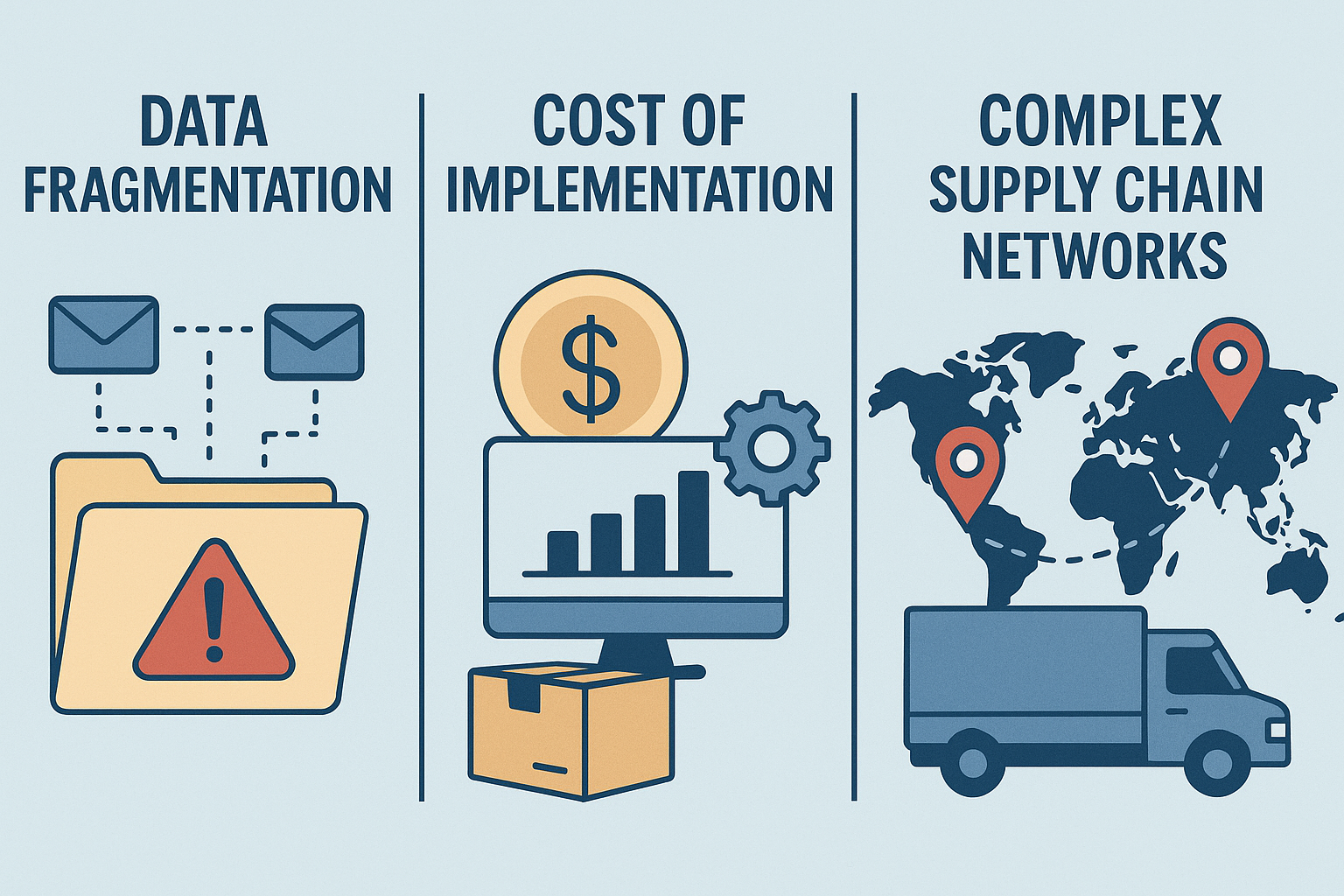In today's fast-paced, global economy, businesses are under immense pressure to streamline their operations, improve customer satisfaction, and reduce costs. One critical factor that impacts all these aspects is freight visibility. As industries become more interconnected and reliant on complex supply chains, the need for businesses to have clear, real-time visibility into their freight movements has never been greater.
Understanding why freight visibility is critical for business success can offer companies a significant advantage. This article will explore the importance of freight visibility and how it enhances decision-making, improves customer service, and contributes to cost savings. Furthermore, we will delve into how freight visibility can be achieved through modern technologies and innovative solutions.
Let's Get Straight To The Point
Freight visibility is essential for businesses to streamline operations, reduce costs, and enhance customer satisfaction. It enables real-time tracking of shipments, allowing businesses to make data-driven decisions, improve operational efficiency, and manage risks more effectively. Key benefits include optimising logistics, reducing stockouts, enhancing customer communication, and strengthening supplier relationships.
Technologies like GPS tracking, RFID, IoT, blockchain, and Transportation Management Systems (TMS) are crucial in achieving this visibility. However, businesses face challenges like data fragmentation, high initial investment, and complex supply chains, which can be addressed with integrated solutions and collaboration with partners.
For businesses in transportation and logistics, freight visibility is no longer optional but a competitive necessity that ensures long-term success and an efficient, resilient supply chain.
The Importance of Freight Visibility in Today's Business Environment
As the logistics and supply chain landscape evolves, companies are increasingly realising the importance of freight visibility for ensuring business success. The world is moving toward digitisation and automation, which means traditional methods of managing freight are no longer sufficient. In this section, we’ll break down several critical reasons why freight visibility is now an essential component of business operations.
1. Enhancing Operational Efficiency
One of the primary reasons freight visibility is critical for business success is its ability to enhance operational efficiency. In the past, businesses relied on manual tracking methods, such as phone calls and emails, to keep tabs on shipments. This approach was not only time-consuming but also prone to errors, resulting in delayed responses and inefficient operations.
With real-time freight visibility, businesses can track shipments instantly, allowing them to make quick decisions. If a shipment is delayed or off-course, stakeholders can be alerted immediately, enabling them to take corrective actions without wasting valuable time. This quick response leads to better coordination among team members, minimising downtime and improving overall supply chain efficiency.
2. Reducing Operational Costs
Cost reduction is always a key priority for businesses, and freight visibility plays a crucial role in this area. By providing real-time tracking data, businesses can identify inefficiencies and areas where costs can be minimised. For example, with access to data on routes and delivery times, companies can optimise their logistics operations, reducing fuel consumption and improving vehicle utilisation.
Additionally, freight visibility can help businesses prevent costly inventory stockouts and overstock situations. When companies have a clearer view of their shipments' status, they can better plan for incoming goods and manage inventory levels more effectively, ultimately saving money.
3. Improving Customer Satisfaction
In an increasingly competitive marketplace, customer satisfaction is more important than ever. Consumers expect quick, reliable, and transparent service, and freight visibility is essential in meeting these expectations. By providing accurate delivery estimates, companies can improve their customer communication and reduce the risk of frustrated clients.
Real-time updates about the location of goods also allow businesses to proactively notify customers about any delays or changes to delivery schedules. This level of transparency builds trust with customers, as they feel informed and valued. In turn, this can result in better customer retention and higher levels of customer loyalty.
4. Better Risk Management
Freight visibility plays a critical role in identifying and managing risks within the supply chain. Whether it’s weather-related disruptions, traffic delays, or customs clearance issues, real-time visibility allows businesses to pinpoint potential risks and respond swiftly.
For instance, if a shipment is delayed at a port or warehouse due to unforeseen circumstances, businesses can quickly reroute shipments or adjust schedules to minimise the impact. Furthermore, visibility into freight status can help companies predict potential disruptions, enabling them to develop contingency plans and avoid costly delays or lost sales.
5. Improving Supplier And Partner Relationships
In today’s interconnected world, businesses often work with a variety of suppliers and partners to source materials or ship products. Effective communication and collaboration with these stakeholders are crucial to ensuring smooth operations. Freight visibility enables businesses to keep their suppliers, distributors, and logistics partners updated on the status of shipments in real time.
By sharing freight data and collaborating through a centralised platform, businesses can strengthen relationships with suppliers and partners, reduce the likelihood of misunderstandings, and ensure that all parties are aligned in their goals. This level of collaboration is essential for maintaining a strong, efficient supply chain.
What Is Freight Visibility?
Freight visibility refers to the ability to track and monitor the movement of goods across the supply chain from the point of origin to the final destination. This visibility involves gathering data from various sources, such as GPS trackers, RFID tags, and automated systems, and making this information accessible to stakeholders in real time. It enables businesses to understand where their products are at any given moment, track delays, and make informed decisions about inventory management, route optimisation, and more.
In simple terms, freight visibility provides businesses with a complete view of their shipments at every stage of transit. This transparency not only helps companies stay on top of their operations but also provides a more reliable and efficient way of managing logistics.
Technologies Driving Freight Visibility

To achieve freight visibility, businesses rely on a variety of modern technologies. These tools allow companies to track shipments, monitor conditions, and manage logistics operations more effectively. Let’s take a look at some of the key technologies that are transforming freight visibility today.
1. Gps And Iot Tracking
Global Positioning System (GPS) technology has become one of the most widely used methods for tracking freight. By placing GPS trackers on vehicles or containers, businesses can monitor shipments in real time and gain insights into their exact location. The Internet of Things (IoT) takes this a step further by integrating sensors and devices that can monitor various aspects of freight, such as temperature, humidity, and pressure.
These technologies provide a comprehensive view of the entire shipment journey, enabling businesses to make data-driven decisions and respond quickly to any issues that arise.
2. Rfid And Barcode Scanning
Radio Frequency Identification (RFID) and barcode scanning technologies are widely used for tracking products within warehouses and during transportation. RFID tags can be attached to pallets or containers, allowing businesses to track the movement of goods through different stages of the supply chain. Similarly, barcode scanning helps quickly capture product information and update shipment statuses in real time.
These technologies reduce human error, speed up data collection, and enhance the accuracy of freight tracking systems.
3. Blockchain Technology
Blockchain technology has the potential to revolutionise freight visibility by providing a secure and transparent way to track shipments. A decentralised ledger system ensures that all transaction data related to a shipment is recorded and verified in real-time, making it nearly impossible to alter the information.
This technology enhances the accuracy of freight tracking and provides a more secure way to manage sensitive data. By using blockchain, businesses can create a trusted network of stakeholders who can access and share shipping data securely.
4. Transportation Management Systems (Tms)
A Transportation Management System (TMS) is a software solution that helps businesses manage their transportation operations more efficiently. Many TMS platforms offer integrated freight visibility features, allowing businesses to track shipments in real-time, optimise routes, and reduce costs.
By providing a centralised platform for all transportation-related data, TMS solutions make it easier for businesses to manage freight visibility, gain insights into supply chain performance, and improve decision-making.
Overcoming Challenges in Achieving Freight Visibility
While the benefits of freight visibility are clear, achieving it is not without its challenges. Businesses must overcome several barriers to implement effective freight visibility solutions. Let’s take a look at some of these challenges and how companies can address them.

1. Data Fragmentation
In many supply chains, data is often fragmented across different systems, partners, and platforms. This can make it difficult for businesses to get a comprehensive view of their freight. To address this issue, businesses should invest in integrated software solutions that consolidate data from various sources into one centralised platform.
2. Cost Of Implementation
Implementing freight visibility solutions can require a significant initial investment in technology and infrastructure. However, the long-term benefits, such as improved efficiency, cost savings, and enhanced customer satisfaction, often outweigh the upfront costs. Businesses can start small by adopting basic tracking tools and gradually expand their visibility capabilities as they see a return on investment.
3. Complex Supply Chain Networks
As supply chains become more complex, with multiple stakeholders involved, maintaining visibility becomes more challenging. To mitigate this, businesses should establish strong communication channels with their partners and suppliers and encourage them to adopt compatible technologies that allow for seamless data sharing. Collaborative platforms can help create transparency and alignment across the supply chain.
Conclusion
Freight visibility has emerged as a critical component of modern supply chain management. With real-time tracking, businesses can enhance operational efficiency, reduce costs, improve customer satisfaction, and better manage risks. Moreover, advancements in technology, such as GPS tracking, RFID, blockchain, and TMS platforms, have made achieving freight visibility more feasible and effective.
For freight people and businesses in the transportation and logistics industry, investing in freight visibility solutions is no longer optional—it’s a necessity for maintaining a competitive edge. By embracing these technologies and leveraging the insights they provide, companies can position themselves for long-term success and create a more resilient, transparent, and efficient supply chain.
Freight visibility is not just a trend; it is the future of supply chain management, and companies that prioritise it will be better equipped to thrive in the ever-evolving global marketplace.
FAQs
How Can Businesses Overcome These Challenges?
Businesses can overcome these challenges by adopting integrated software solutions, collaborating with suppliers and partners on compatible technologies, and starting with smaller-scale implementations to demonstrate a return on investment.
Is Freight Visibility A Trend Or A Long-Term Necessity?
Freight visibility is not just a trend—it is a long-term necessity for businesses in today's complex, global supply chains. Companies that prioritise freight visibility gain a competitive edge, improve efficiency, and ensure better customer satisfaction, which are essential for long-term success.
How Can Freight Visibility Improve Risk Management?
With real-time visibility, businesses can identify potential risks like weather disruptions, delays, or issues at customs and respond quickly. This proactive approach allows businesses to mitigate risks, reroute shipments, and develop contingency plans, reducing the impact of unforeseen disruptions.
What Are The Benefits Of Freight Visibility For Supplier Relationships?
Freight visibility enables better communication and collaboration with suppliers and partners by providing real-time updates on shipments. This transparency reduces misunderstandings, aligns goals, and strengthens partnerships, ultimately leading to a more efficient and reliable supply chain.
How Can Freight Visibility Be Scaled As A Business Grows?
As businesses expand, they can scale their freight visibility solutions by adopting more advanced technologies, integrating multiple platforms, and collaborating with more stakeholders. Modular software solutions, like TMS platforms, can help businesses gradually expand their visibility capabilities without overwhelming their systems.

